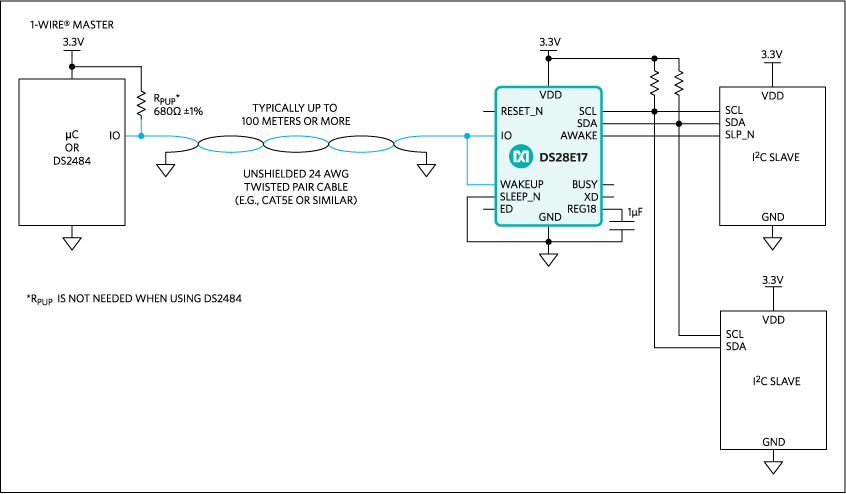Hi there,
WOW, 5 Feet that is a long way , what speed?
I see this: The maximum length of an I2C (Inter-Integrated-Circuit) cable depends on the bus speed, and is generally limited to a few meters:
- 100 Kbaud: Maximum length of 1 meter
- 10 Kbaud: Maximum length of 10 meters
- 100kHz clock speed: Rough guideline of 12 inches
- 400kHz clock speed: Rough guideline of 6 inches
- 1MHz clock speed: Rough guideline of 3 inches
Other factors that affect the maximum length of an I2C cable include: Pull up resistors, External interference, Wire quality, and Capacitive loading.
Here are some tips for extending the length of an I2C cable:
- Run at a lower clock frequency
- Use twisted pair and/or shielded cable
- Use an active current source instead of a pull-up resistor
- Use a charge pump to reduce “ghost signals”
- Use USB devices in conjunction with an active USB extension
Solution  According to Analog Devices
According to Analog Devices
The maximum distance of an I2C bus depends on the capacitive loading. In typical applications, the length is limited to a few meters in standard mode. This is because a system has to be built to accommodate a maximum bus capacitance of 400pF to meet rise time requirements listed in the I2C bus specification (Rev. 6 – 4 April 2014). To achieve greater distances by operating above the maximum allowable bus capacitance, the I2C bus specification allows operating at a lower speed, using higher drive output devices, dividing the bus into segments with bus buffers, or the use of switched pullup circuits. While on the surface these methods may seem viable, they either do not meet the long-distance requirements or significantly increase the cost. An alternative is to use the DS28E17 1-Wire-to-I2C Master Bridge.
I like it…
check it out over HERE
Sounds like you need can bus or IEEE488 ![]() jk’n…
jk’n…
HTH
GL ![]() PJ
PJ ![]()
